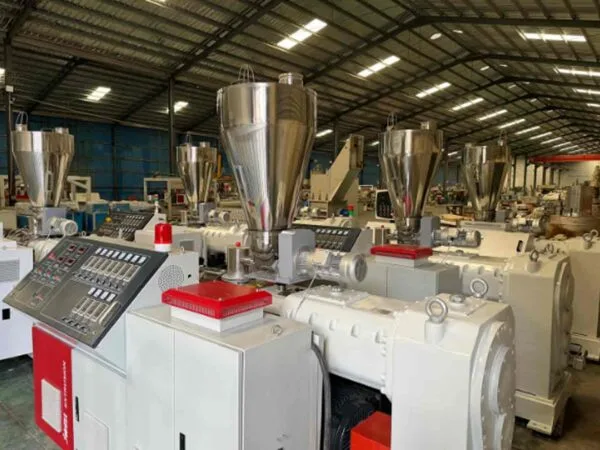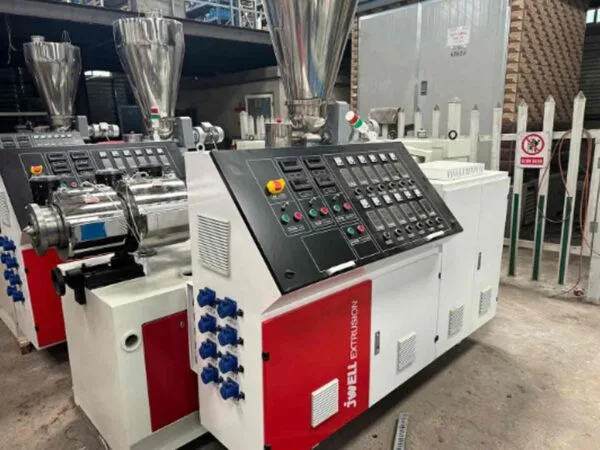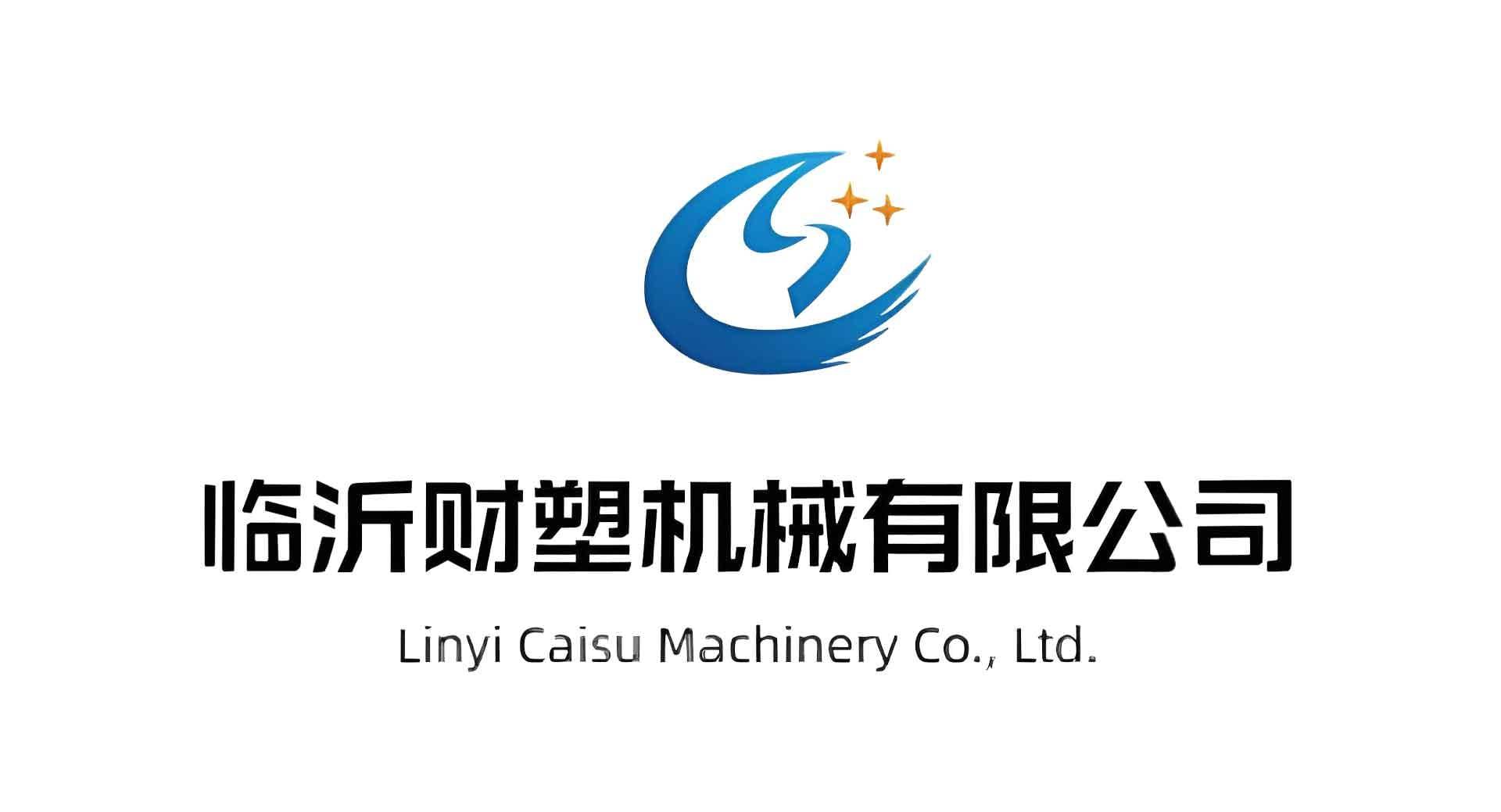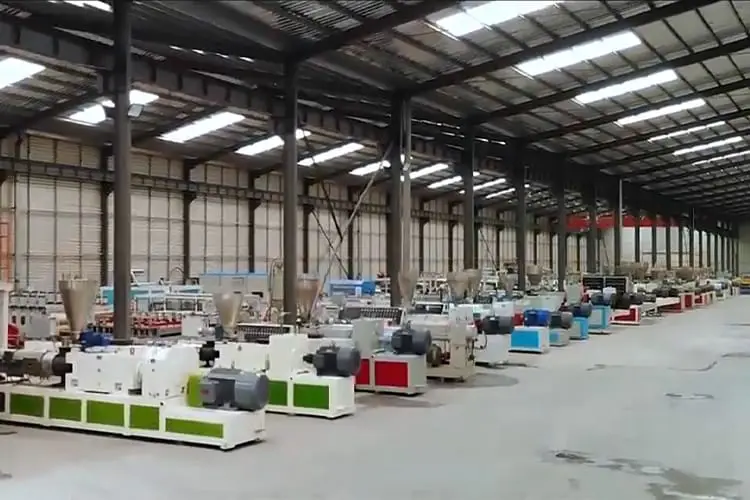Welcome to My Blog!
Before we dive into the content, I’d love for you to join me on my social media platforms where I share more insights, engage with the community, and post updates. Here’s how you can connect with me:
Facebook:https://www.facebook.com/profile.php?id=61567891941530
Now, let’s get started on our journey together. I hope you find the content here insightful, engaging, and valuable.
Caisu Machinery sells a variety of used plastic pipe production equipment. The products are of high quality and low price. Welcome to contact us for consultation and purchase. We will be happy to serve you.
Table of Contents
Introduction
Despite advances in twin screw and multi-phase extrusion systems, the single-screw plastic extruder machine continues to dominate plastic processing. According to a 2024 report by Plastics Technology Insights, over 60% of global polymer extrusion lines still rely on single-screw machines due to their simplicity, low maintenance, and cost-effectiveness.
This machine is widely used across sectors such as:
- Pipe and tubing production
- Wire and cable sheathing
- Film and sheet extrusion
- Profile and rod manufacturing
- Recycled plastic pelletizing
The design is particularly suited for thermoplastics such as polyethylene (PE), polypropylene (PP), polystyrene (PS), polyvinyl chloride (PVC), and others.
Let’s break down its key components and performance characteristics.

Working Principle and Components of a Single Screw Plastic Extruder Machine
Understanding the working principle is critical if you’re operating or sourcing this type of equipment. The single screw plastic extruder machine works by conveying, melting, and pushing plastic material through a shaped die. The process is continuous, highly controllable, and adaptable to a variety of materials.
Here’s an overview of its key components:
| Component | Function |
|---|---|
| Hopper | Feeds raw plastic pellets into the barrel |
| Barrel | Houses the screw and applies controlled heat |
| Screw (Single Helix) | Rotates to convey, compress, and melt plastic |
| Heater Bands | Supply thermal energy to aid melting and reduce screw wear |
| Die Head | Shapes the molten plastic into the desired profile or form |
| Control System | Regulates temperature, speed, and pressure for consistency |
Each of these components must be carefully designed and calibrated to ensure material homogeneity, energy efficiency, and minimal degradation during processing.
Key Performance Factors of a Single Screw Plastic Extruder Machine
Choosing the right single screw extruder isn’t just about capacity. It’s about matching the machine’s characteristics to your application.
Screw Design and L/D Ratio
The length-to-diameter (L/D) ratio of the screw affects residence time, mixing efficiency, and melt quality. Most general-purpose extruders use an L/D ratio between 24:1 and 30:1. A longer screw improves melting and homogeneity but also requires higher torque and precision control.
Throughput Capacity and Material Compatibility
Throughput rates can range from 30 kg/h to over 1000 kg/h, depending on the screw diameter and material type. For example:
| Screw Diameter (mm) | Typical Output (kg/h) | Suitable Materials |
|---|---|---|
| 45 | 30–80 | PE, PP, PS |
| 65 | 80–180 | PVC, recycled plastics |
| 90 | 200–400 | HDPE, LDPE, PP |
| 120 | 400–800+ | Engineering polymers, filled compounds |
A larger diameter doesn’t always mean better. Your material behavior, die head pressure, and downstream speed all factor in.
Temperature and Pressure Control
Maintaining stable melt temperatures is critical for product consistency and color uniformity. Good extruder design includes:
- Multiple heating zones (typically 3–5)
- PID-controlled heaters
- Barrel cooling fans or water cooling systems
The pressure at the die head must also be managed to prevent melt fracture or dimensional instability.
Applications of the Single Screw Plastic Extruder Machine
The versatility of this machine means it supports a broad range of applications:
Pipe and Tube Extrusion
Polyethylene, PVC, and PP pipes for water delivery, electrical conduit, and irrigation are typically produced using single screw extrusion lines. Calibration tanks and haul-off units shape and cool the product after it leaves the die.
Plastic Film and Sheet Manufacturing
Blown film and cast film production lines frequently use single screw extruders for materials like LDPE, LLDPE, and EVA. With fine temperature control and efficient mixing, these machines help produce consistent film gauge and tensile properties.
Profile and Rod Extrusion
For manufacturing plastic window frames, curtain rails, and structural profiles, single screw extruders offer excellent dimensional control when paired with vacuum calibrators and caterpillar haul-off units.
Recycling and Pelletizing
Reprocessed materials such as post-industrial and post-consumer plastic can be melted, filtered, and pelletized with single screw extruders. Degassing vents and filtration systems are critical for maintaining pellet purity and output quality.

How to Choose the Right Single Screw Plastic Extruder Machine for Your Needs
Define Your Material and Product Goals
Before investing, ask yourself:
- What type of polymers will I process?
- Do I need high clarity, strength, or flexibility in the end product?
- What are the expected daily output and downtime tolerances?
These considerations will determine the needed barrel configuration, motor power, screw type (barrier or mixing), and die tooling.
Consider Energy Efficiency and Automation
Modern single screw plastic extruder machines feature:
- Energy-efficient servo motors
- Smart PLC or touchscreen interfaces
- Remote diagnostics and production tracking
- Automatic start-stop sequences and safety interlocks
These features reduce energy consumption and labor costs while improving safety and uptime.
Evaluate Supplier Support and Customization
A high-performance machine is only as good as the support behind it. Look for suppliers that offer:
- Custom screw designs based on your raw materials
- Full documentation and quality certifications (ISO, CE)
- In-person commissioning, training, and after-sales service
- Spare parts availability and warranty coverage
A supplier’s experience in your specific application is often more valuable than the machine’s listed specs.
Conclusion
If you’re exploring extrusion solutions or considering upgrading your current system, our team of engineers and technical advisors is here to help. We offer customized machine designs, application-specific consultations, and end-to-end support for your extrusion line setup.
Contact us today to discuss your production needs and find the ideal single screw plastic extruder machine for your operation.
FAQ
What’s the difference between single screw and twin screw extruders?
Single screw machines are simpler and cost-effective, ideal for homogeneous materials. Twin screw extruders are better for compounding, blending, or materials with poor flowability.
How do I improve melt consistency?
Use a properly designed screw, ensure even heating across zones, and maintain consistent feedstock particle size. Melt filters and static mixers at the die can also help.
Can I process recycled materials?
Yes, many single screw plastic extruder machines are optimized for recycling. You’ll need a degassing vent, melt filtration system, and stable temperature control to ensure quality pellets.
How long does a screw typically last?
With proper maintenance and if processing clean material, a screw can last 1–3 years. Processing filled or abrasive materials can reduce that to less than a year.
What safety features should I look for?
Important safety features include emergency stop buttons, barrel guards, overload protection, interlocked access panels, and automatic shutdown systems.





